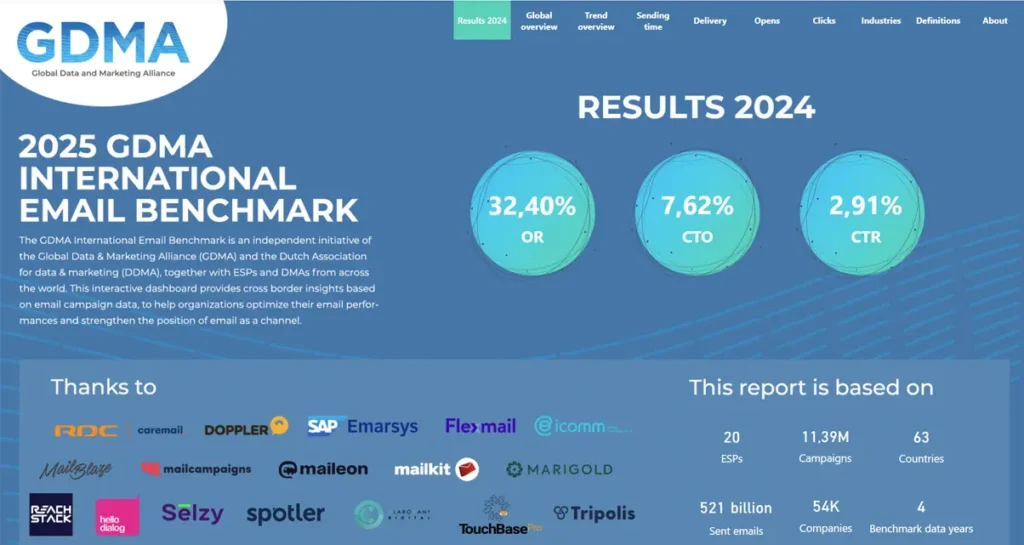Activate Search
Optimise search results on your site to provide a better shopping experience.
AI in Spotler Products

We added generative AI, conversational AI and predictive AI in our products.
Want to know how you have control over it and how you can benefit from AI?
Read more
The AI solutions we offer
Services
Although our products are easy to use, we offer a wide range of services to help you succeed even more in using our software.
Technical specialists
Specialists who help you get more out of your marketing efforts
Table of contents

How to spot bot opens and clicks in your email statistics
After days of tinkering with texts, images, and code, the moment has arrived: your newsletter is ready. You hit send… within seconds, the email opens, and clicks start rolling in. Brilliant news, you’d think. But looks can be deceiving. Those clicks might not come from readers at all, but from bots.
The percentage of bot opens and clicks in email marketing has increased for several years. We’re facing a growing challenge: How do you spot bot opens and clicks and extract genuine human behaviour from your email statistics?
What are bot clicks (and why do they exist)?
Bot clicks are automated link clicks in an email, carried out by software rather than by a human recipient. These bots are often part of security systems or spam filters that scan incoming emails for threats.
When your email lands on the recipient’s mail server, such a system may “click” every link to check for phishing or malware. This happens almost instantly after delivery, sometimes even before the recipient has opened the email.
Such pre-scans are common in business environments (companies, governments, and education), where security measures are stricter.
Disclaimer:
Bot opens and clicks
Apart from bot clicks, there are bot opens or proxy opens: emails flagged as “opened” not by the recipient, but by a system or privacy service.
Apple’s Mail Privacy Protection (MPP) is a well-known example, introduced in 2021. This feature automatically preloads images (and, therefore, open-tracking pixels). The result? You see an “open” in your stats even if the user never read the message.
These measures exist to protect users’ privacy and safety, not to annoy marketers. Think of them as airport security checks: every bag (or link) is screened before passengers (or recipients) are cleared. This is reassuring for users but frustrating for marketers who want to measure engagement accurately.

Go to the dashboard.
Why are bot opens and clicks a problem for marketers?
It’s one thing that automatic opens and clicks exist. However, it becomes a challenge when we look at traditional email marketing KPIs. Recent research data from the GDMA Email Benchmark 2025 shows that recipients worldwide are still eagerly opening emails (an average unique open rate of 32.5% in 2024, comparable to previous years) but click through less. Worldwide, the Click-to-Open Rate dropped to 7.6% and the Click-Through Rate to only 2.9% in 2024.
Marketers are looking for explanations: is the content less appealing, or are measurement problems playing a role? Probably both. Bot activity can artificially inflate or cloud the performance, meaning that you can no longer determine the effectiveness of your email marketing. A summary of the effects of bot opens and clicks:
Distorted engagement metrics
Your click rate and open rate no longer reflect genuine interest. A click rate that partly consists of ‘fake clicks’ gives a false picture of engagement. With Apple’s MPP, open rates suddenly rose, without more people reading your content. In short, these traditional metrics are less usable as genuine KPIs.
Misleading A/B tests and optimisation
Making decisions based on unreliable data is dangerous. Suppose you test two subject lines and version A wins on open rate. But what if the proxy distorts those figures? Or you conclude that a specific call-to-action attracted many clicks, while half came from bots. You may then draw the wrong conclusions and make the wrong choices.
Automation and segmentation are going off track
Many email marketers use behavioural rules (‘if contact X clicks on link Y, then…’) for personalised follow-up. Bot clicks throw a spanner in the works: contacts can wrongly move through a funnel or end up in a segment because a bot clicked on a trigger link.
A recent example on LinkedIn suggested that even a well-known hotel website was suffering from bot opens and clicks. Here, review emails are triggered after a hotel stay and contain a button that leaves a positive review. However, this button has no validation and, therefore, ensures that many ‘hotel guests’ suddenly become enthusiastic about hotels where they might not have slept well.
Increased difficulty cleaning inactive contacts
Typically, you can identify non-active recipients after a particular time based on the absence of opens or clicks and possibly ‘sunset’ them. But if even people who have not opened their mailboxes for 2 years occasionally show a bot click, it becomes difficult to determine who is inactive. Keeping your database clean, therefore, requires more investigation.
Well. It should be clear: bot clicks and other non-human interactions make reporting more difficult. For years, clicks have been an essential currency in email marketing, but now bots, especially for B2B senders, are increasingly contaminating that statistic.

The growth of bot clicks: how big is the problem?
Bot opens and clicks are not entirely new, but their impact is increasing. These types of bots have existed for years, but they were less noticeable as long as they only concerned incidental clicks. In 2025, however, we see it occurring more and more often.
Firstly, virtually every primary mailbox provider (from Gmail’s ‘Click-time link protections‘ to Outlook’s ‘Safe Links‘) has implemented additional security layers in recent years to protect users. This means that emails are more often scanned automatically.
Secondly, the email volume has continued to grow. In 2023, an estimated 347 billion emails per day were sent worldwide, and with that massive flow, the necessity to filter out harmful emails automatically also increases.
A third development is that the email industry has become more aware of these developments. In the GDMA International Email Benchmark 2025, an attempt was made to map the proportion of bot opens and clicks. The good news is that several Email Service Providers (ESPs) can distinguish bot clicks from real ones. The bad news is that not every ESP can do this, and as an email marketer, you still need to remain sharp and critical of your email results.
Finally, we clearly see that business recipients are responsible for many of the bot interactions. For example, with Microsoft/Outlook domains, an increase in automatically clicked links and even unwanted unsubscribes has been observed.
B2B marketers report that entire groups of addresses within one organisation suddenly all click on the same link immediately after sending. However, this does not mean that B2C mailers escape the phenomenon; large mail providers such as Gmail and Yahoo also now carry out intensive security checks on incoming mail.
How to recognise bot behaviour
Bots behave differently from humans (obviously). Some indicators to watch out for:
- Super-fast interactions
- Clicking on all (illogical) links
- Identical patterns within one domain
- Difference between email clicks and site visits
- Technical signals
Super-fast interactions
Are links in your email being ‘clicked’ within a few seconds (or even milliseconds) after sending? Then that is almost certainly not a human recipient. A normal person needs time to open and read the mail before clicking. Therefore, Many ESPs also register the time-to-click (the number of seconds between open and click), so you can already filter out extreme cases.
Clicking on all (illogical) links
Do you notice that certain recipients have clicked on every link in your email, even the footer links to your privacy policy or terms and conditions? That too indicates a bot. It’s unlikely you have opened a (non-test) email and clicked on every link. And if you claim you have, then maybe you are a bot yourself…
Identical patterns within one domain
Do you see clusters of clicks with the same domain? For example, 20 addresses from @company.com that all ‘clicked’ on the same two links at exactly 10:03:05 indicate that company X has a filter that automatically goes through your mail. You can quite easily detect such patterns by grouping your click data by domain and time, if necessary, in an Excel sheet.
Difference between email clicks and site visits
A handy cross-check is to compare your email statistics with your web analytics (for example, via UTM tags and Google Analytics). Suppose your newsletter report shows 100 clicks to your landing page, but in GA, you only see ~60 sessions from that mailing. Then part of the ‘clicks’ was probably never performed by a real visitor. Web analytics tools often filter out bots better, so differences between the two figures can reveal possible bot activity.
Technical signals
Some bots give themselves away through a missing or strange user agent in the click request, but they increasingly imitate a standard browser. As a marketer, you have limited visibility here unless your email platform shows that information.
What can you do against bot clicks?
Completely preventing bots from scanning your emails is not possible. In addition, in my opinion, it would also be unwise to work against your recipients’ email security. What you can do, however, is adjust your approach so that you suffer less from these false signals. Some best practices:
Make use of filtering options in your ESP
First, investigate whether your email service platform has a bot filter or a setting option to detect automated clicks/opens. Some forward-thinking ESPs nowadays have features that can automatically exclude suspicious clicks (e.g., based on known bot IPs, user agents, or timing) from reports.
Adjust your unsubscribe process
An essential part of setting up your permissions is the one-click unsubscribe. If a bot visits that link, your subscriber is gone immediately, without confirmation. Prevent this by switching to a confirmed unsubscribe: let recipients click again on a landing page or confirm that they want to unsubscribe.
Preferably, use a form (POST request) rather than a simple GET via the link. This way, you catch bots: a bot will click on the link but will not complete the second step, preventing unintended unsubscribes.
(NB: specific mail clients offer their own ‘unsubscribe’ button via the list-unsubscribe header; that must always work directly. But you can secure your own link with a double step.)
Filter after sending on time and volume
As mentioned earlier, you can identify many bot clicks in the data based on timing (for example, all clicks <2 sec) and click volume per user. Make it a habit to check after a sent campaign whether there are any ‘unnatural’ patterns in the clicks. Many ESPs show you individual clickers and in which order links were clicked; with this, you can filter out extreme cases (the contact who clicked on 12 links within one minute).
You can roughly subtract these from your ratios to get a more realistic picture of genuine engagement. Some advanced marketers even have scripts for this, but often a common-sense check suffices.
Measure what really counts (conversions, not clicks)
Shift your focus to the ultimate results you want to achieve. After all, a click is rarely the real goal of your campaign; it is a resource. You actually want to know how many people did something that delivered value: a purchase, a form filled in, a reply given, and so on. Therefore, direct your tracking to those conversions instead of opens and clicks.
Through landing pages and site tracking, you can better distinguish human behaviour from bot activity. Ultimately, you can then ignore the bot clicks in your analyses and look, for example, at the number of unique customers who took action.
Continue to follow email best practices
Of course, this is a bit of an open door, but the more relevant and valuable your emails are for the recipient, the less likely you are to suffer from bots eventually.
Why? Firstly, because engaged recipients are more likely to mark your domain as safe (for example, by putting you in their address book), which reduces the chance of heavy scans. Secondly, even with some measurement noise, you will still achieve your goals if real customers remain enthusiastic.
So deliver consistently good content, send regularly, and manage your lists well. Many systems get used to reliable senders who mail predictably and neatly. So do not try tricks to avoid bots (such as constantly changing your sender address or cloaking links); that can arouse suspicion. Instead, keep calm and mail on. Accept that a few bots are watching and focus on what is relevant for your audience.
Humanity above all
The rise of bot clicks forces you as a marketer to look at your email statistics with a sharper eye. We can no longer blindly rely on open and click-through rates as the main KPIs. Let it be an encouragement to return to the core: placing genuine human interaction at the centre. Do not be discouraged by some noise; ultimately, we want our emails to resonate with real people.
That means practically sending valuable content that your target audience is waiting for, measuring success based on actual actions (and even qualitative feedback such as replies or conversations), and using the current metrics at most as a global signal rather than as absolute truth.
Thus, the challenge of bot clicks can become an opportunity: It separates marketers who chase numbers only from those who build real relationships with their audience. Choose the latter approach. However advanced the algorithms and bots may become, as a sender, you ultimately have one trump card that no robot can match: humanity. And that makes the difference in email marketing in the long run.
Stop worrying about fake email statistics
We know what bot behaviour looks like. Our software does too. Look at email statistics you can trust and rely on experts who help you work around the quirks of the inbox. Interested in learning how Spotler can help you send better emails? Book a quick demo!
